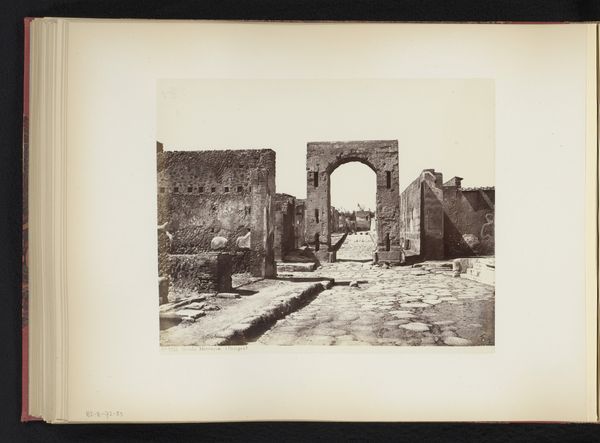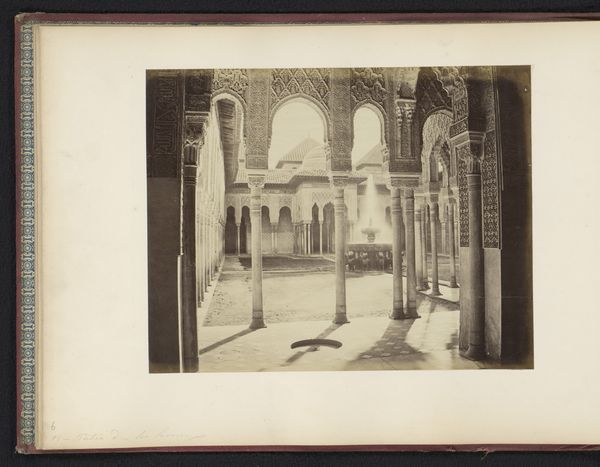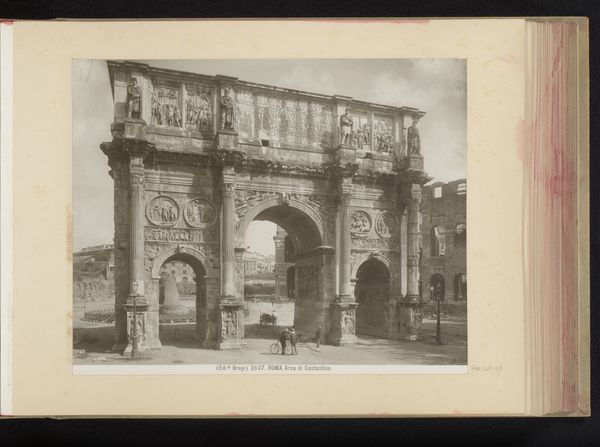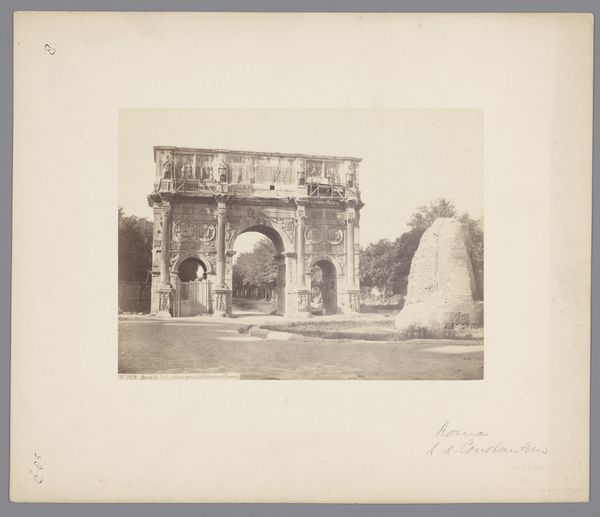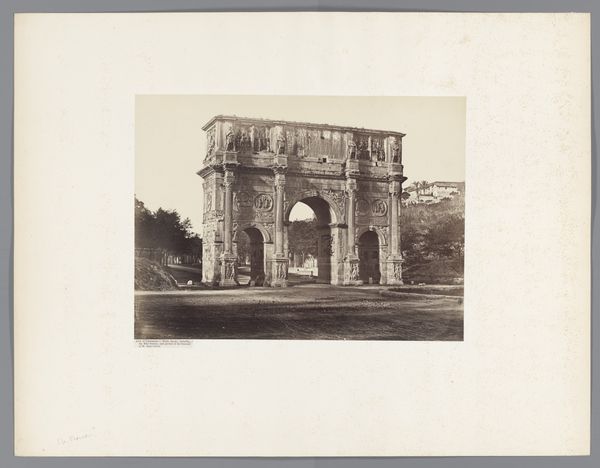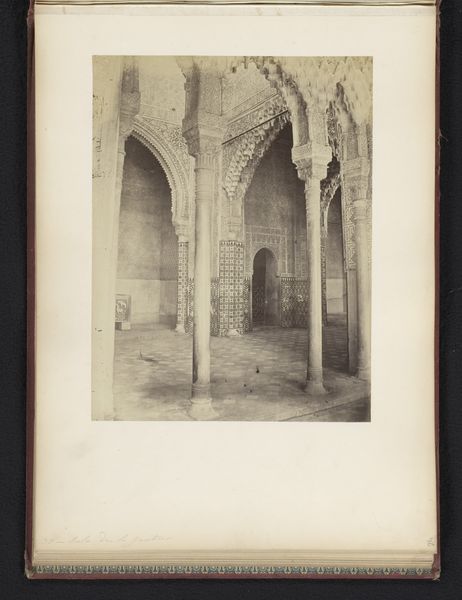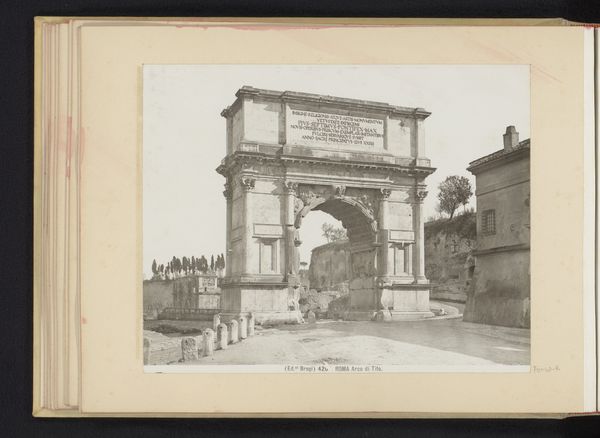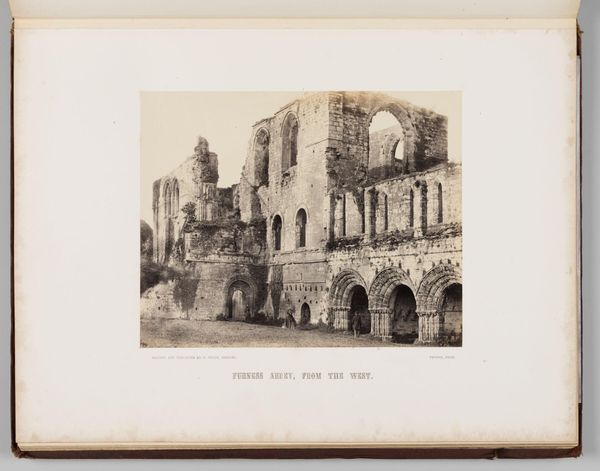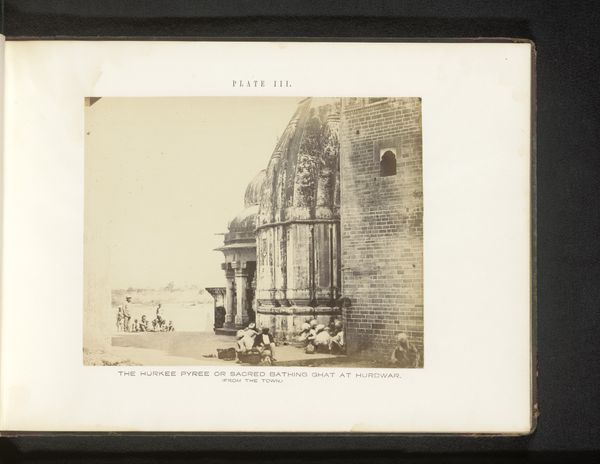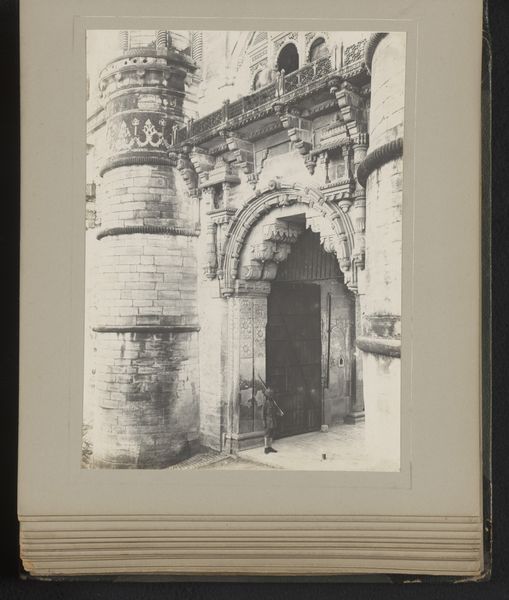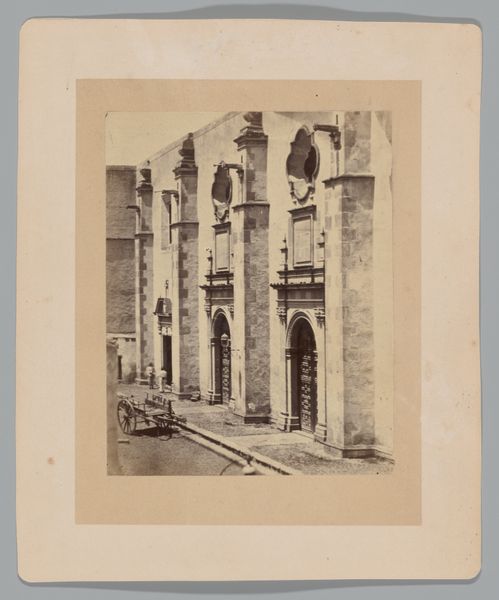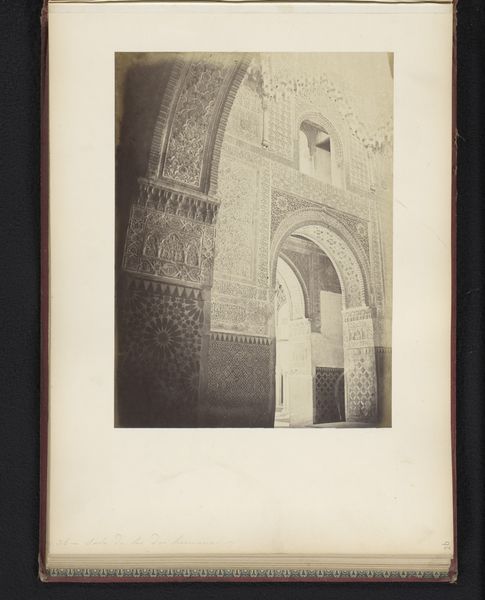
Dimensions: height 189 mm, width 248 mm
Copyright: Rijks Museum: Open Domain
Editor: So this albumen print, taken between 1870 and 1881 by Giacomo Brogi, shows the Arch of Janus in Rome. I’m struck by how this monumental Roman ruin is captured with such stark realism, the classical forms now almost melancholy. What stands out to you? Curator: It speaks of temporal duality to me. Janus, the Roman god of beginnings, transitions, and doorways, is the namesake here. Notice how the arch itself functions as a liminal space, a portal between what was and what will be, perpetually mediating past glories with an uncertain present. Editor: I hadn't considered the symbolism so explicitly, I was just reacting to the structure, to its decay… Curator: The decay is itself symbolic. What is ruined points to past intention, present disregard, and a possible future for symbolic rejuvenation, after all. Observe the figures, seemingly unaware of the monumental weight of history that looms over them. Does that evoke a sense of detachment, or perhaps even a naive obliviousness, in you? Editor: Perhaps a little detachment, yes, they look so small compared to it all. But I suppose everyone existing after this thing was erected might feel a similar thing. Curator: And isn't that precisely the point? The arch transcends individual experiences. Brogi has framed it here such that the symbols reverberate through time, inviting us to consider our own place within that continuum. Photography as a cultural record and visual metonym for time itself. Editor: I see the layers of time you're describing – it's amazing how much symbolism is packed into one image. Thank you. Curator: Indeed. And hopefully you, too, will become more attuned to the symbols that quietly shape our understanding.
Comments
No comments
Be the first to comment and join the conversation on the ultimate creative platform.
